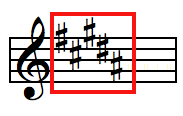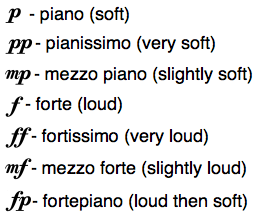Learning to read sheet music is not only for people with a special talent or a superior IQ. Or for someone who has been playing an instrument for 30 years or more.
Have you ever watched someone sit down at an instrument and just start playing a piece of sheet music that they have never seen before?
Most people don’t realize is that they do have the ability to learn how to read sheet music. It does take time and determination, but it is possible for anyone to learn this skill.
It’s just like learning to read. It takes time to learn the sounds of each letter, how to combine letters into words, and then read your favorite novel. It’s the same with reading music. It takes time to learn the names of each individual note, then combine notes into chords, and make all this fluent like you reading a book.
Let’s jump right in and start looking at some of the basic concepts you will need to know when learning to read piano notes.
Basics Of Learning To Read Sheet Music

The first thing that any musician needs to learn when sight reading music is the notes in treble clef and bass clef.
Each of these clefs sit on what is called the staff. The staff is made up of horizontal lines and spaces where each note lies. Each of these lines and spaces represent a note, and directs the musician on what to play.
Musicians must also focus on learning note duration. Each note in a piece of music is given a particular time in which it should be held out. Each note is given a unique visual design, which in turn tells musicians how long they should hold it out.
Rests are also important to read piano notes. When learning to read sheet music, these types of notes instruct the musician to stop playing. There will be times when your instrument will have to stop playing to add emphasis to a song, or the music will tell you to only play notes with the right hand, and play nothing with the left.
This is where rests are important. They tell you when to add silence to a piece. Here are a few types of rests you will come across in sight reading music: half rests, quarter rest.
There are many other music note symbols that you must know when reading piano music.
More Advanced Concepts
After learning the notes on the treble and bass clef, and also learning note duration, the musician should focus on learning time signature, key signature, repeats, another important factor such as dynamics and style when learning to read sheet music.
Time Signature
The time signature in the piece of music tells the musician what time the song is to be played in. Examples of popular time signature are: 4/4, 3/4, 6/8, 2/2. Time signature gives this music a pulse, or continual steady beat that the song is to follow.

Think of it like your heat beat. It keeps a constant steady beat. Each song has a beat that it follows and the time signature tells the musician how that steady beat will sound.
Key Signature

The key signature of a song tells the musician how many sharps and flats are in a song. If you look at the beginning of a piece of music, in the far left you will see sharps and flats on the staff lines right next to the treble and bass clefs symbols.
The number of sharps and flats shown here tell the musician what key the song is in and directs them to make certain notes sharp or flat in the song.
Navigating Sheet Music
Navigating sheet music is also a very important concept when learning to read sheet music. Following specific repeat signs allows the musicians to know exactly where to be in a piece of music. This acts as a road-map throughout the song.
Repeat signs can be as simple as telling you to start over at the beginning of the song, to more advanced like skipping over an entire section.
Dynamics and Style
Other important factors when learning to read sheet music are dynamics and style.
There are multiple dynamic symbols in music you must know such as forte, mezzo forte, piano and pianissimo. These dynamic symbols, or signs, show the musician how loud or how soft they should be playing in a piece of music.
Take a look at the image below to see the types of dynamic markings.

Dynamics can change instantly throughout a song. It’s important to pay close attention to the dynamic signs in a piece of music. This will help allow for greater accent on a particular section, or to add greater emphasis to a phrase, or show a change in the musical mood.
Is there a faster way for learning to read sheet music?
Yes and no.
Learning the basic of sheets music can be a simple process. Learning to read one individual note at a time can be quite simple.
However adding additional notes, key changes, and other more advanced concept can make reading sheet music more difficult.
Just like any other skill, it takes time of practice and dedication to really know how to read sheet music. To be able to read a piece of sheet music you have never seen before does take time and practice. It’s not something that is left for only the elite musicians.
You can learn how to read sheet music quickly. But in order to master sheet music, it takes diligent practice.
Go From Learning To Read Sheet Music Back to Piano Theory
Back to Home Page

